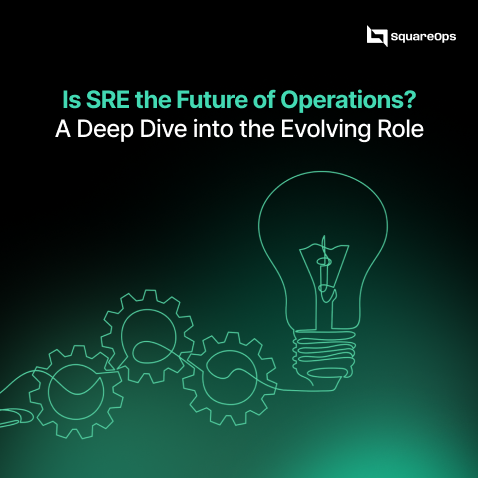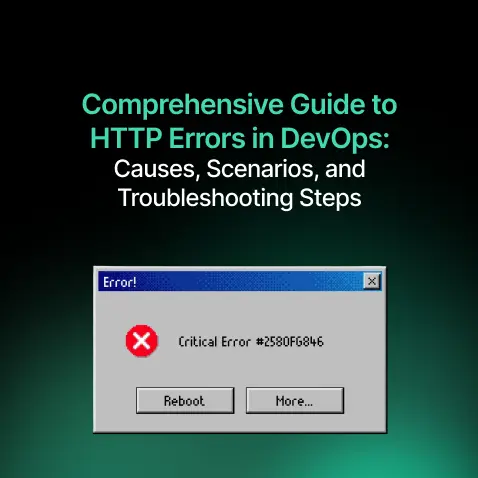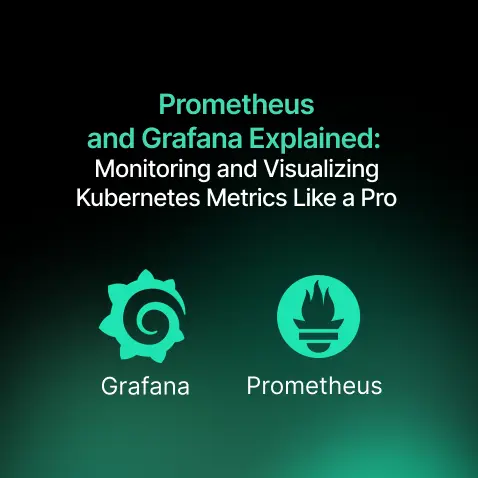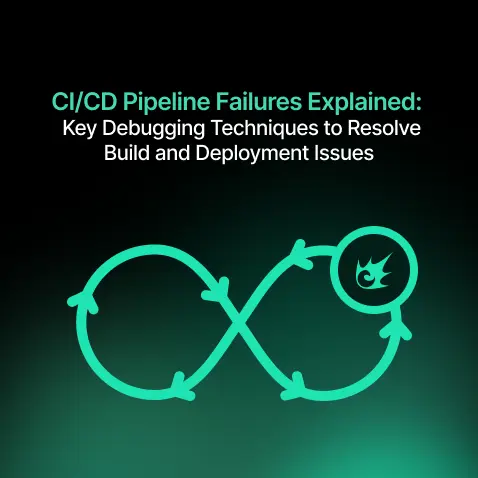Is SRE the Future of Operations? A Deep Dive into the Evolving Role
- Nitin Yadav
- Knowledge
About

Discover why SRE is the future of IT operations. Learn how Site Reliability Engineering drives scalability, automation, and resilience in modern cloud environments.
Industries
- DevOps, Kubernetes, Site Reliability Engineer, SRE tools, Terraform
Share Via
Introduction
Distributed systems and microservices: Distributed systems require detailed guidance upwards toward vision; Product innovation and cloud-native management; Gartner model of microservices, containers, and containers, with #microservices as a tag: The established model of IT operations is struggling to survive in the new world. Manual ticket-based processes, reactive incident management, and disconnected development and operations teams no longer keep up with the requirements of high availability, rapid innovation and user-focused reliability of today’s world.
This is where Site Reliability Engineering (SRE) comes in: It’s the practice that integrates software engineering and IT operations with the goal of creating systems that are scalable and highly reliable.
SRE is quickly becoming the next de-facto standard in running the operations of a modern day cloud, however not only that, it’s also on its way to reshape the complete IT operations field.
In this piece, we will peer into what SRE stands for, what the dying days are for traditional operations, how SRE has changed the operations game, and what lies ahead for reliability engineering.
What is SRE? A Quick Recap
Site Reliability Engineering (SRE) was born at Google when we started asking ourselves: “What if we treated operations as a software problem?”
- At its core, SRE aims to:
- Create scalable, reliable engineering systems
- Automate everything you can.
- Create SLI/SLO to measure the reliability.
- Operational ToilWhat is operational toil?toHaveing constants and constantly having to keep an eye on something, toil that could (technically) be eliminated/minimized through additional proactive monitoring and healing systems + CI/CD.
Since its inception, SRE has grown outside of Google to become recognized as best practice by the world’s foremost technology firms, financial services organizations, out their own infrastructure with that solution globals healthcare companies, and startups.
Why Traditional IT Operations Are Becoming Obsolete
Old-fashioned IT models with manual activities, isolated silos, and reactive firefighting no longer cut it in today’s environment.
Key Challenges Facing Traditional Operations:
- Distributed Systems that are Distributed: With a move towards microservices architectures and deployments to all corners of the globe, monitoring in real-time and reacting with speed and intelligence is more important than ever.
- Why Automation: Manual server provisioning, patching, scaling is too slow and error prone for cloud native apps.
- Continuous Delivery Expectations DevOps pipelines deliver code many times a day, so operations must also be agile, not a bottleneck.
- Proactive Ticket-Based Support: Relying on an alert or ticket to come through to resolve a problem will cause more downtime, longer time to resolve an incident, and a negative user experience.
SRE provides a preemptive operational model that is all about thriving in complexity while maintaining high-velocity innovation and service reliability.
How SRE Transforms Operations
Proactive Monitoring and Observability
SRE is replacing reactive alerting with deep observability:
SLIs and SLOs Instead of having nebulous uptime targets, SREs define specific user-focused goals for reliability.
Observability Stack: Tools for capturing and visualizing metrics, logs, and distributed traces, such as Prometheus, Grafana, Datadog, and OpenTelemetry.
Incident Detection in Real Time: Alerting Mechanisms are Smart enough to detect the anomaly before they become outages.
Automation Over Manual Operations
SRE focuses on automation to remove human error and scale effectively:
Infrastructure as Code (IaC): Tools such as Terraform and AWS Cloud Formation are used to consistently and predictably create, change and destroy infrastructure.
Automate Deployments: CI/CD pipelines automate testing and deployments, minimizing lead time.
Self-Healing Systems – Obama auto-scales, health checks & K8s health prove resilience, no manual healing.
Blameless Incident Management
SRE nurtures learning, not blaming:
- Incident Response Playbooks: Automated workflows for quick, repeatable incident resolution.
- Blameless Postmortems: Explorations into how a system failed, rather than who failed the system.
Remove fear of blame Teams being open about failures leads to a faster organisational learning and resilience.
Continuous Reliability Improvements
What SRE does is it embeds reliability engineering in the natural day-to-day operations:
- Chaos Engineering: Companies such as Gremlin and LitmusChaos are purposefully causing systems to fail in order to expose their weaknesses before they are felt by the users.
- Reliability Testing Load testing, failover testing, disaster recovery tests are the norm.
- Error Budgets: Balancing reliability and innovation through agreed limits on acceptable failure.
The Expanding Role of SRE
As organizations grow their investment in computing in the cloud, what it means to be an SRE is extended to encompass many ideas beyond the traditional notion of system reliability:
SRE and Security (DevSecOps)
- Baking security scans, vulnerability management, and incident response as a part of reliability routines.
- Monitoring and remediating security risk along with system health metrics.
SRE and FinOps
- Cost effective and reliable cloud management.
- Leveraging observability tools to detect overprovisioned resources and to tune down infrastructure costs.
SRE and Platform Engineering
- Creating internal developer platforms that hide operational complexity.
- Providing dev teams autonomy with self-service while still delivering reliability as a standard.
Challenges in Adopting an SRE Model
Migrating from traditional SRE does pose several challenges:
Organizational Resistance
- Ultimately, team organizations may obstruct changes to roles and accountabilities.
- Leadership needs to drive those culture changes to a collective onus of reliability.
Balancing Speed and Reliability
- Teams need to be mindful of releasing features at the expense of error budgets at globe scale to maintain system stability.
Tooling Complexity
- A mature observability and automation stack come with the need for investment in tools, training, and process redesign.
Skills Gap
- Training traditional system administrators to work as SREs involves codewriting, cloud-native architectures, monitoring and automation.
To clear these hurdles, strategic change management, investment in training and leadership commitment to reliability excellence are required.
Future Trends: What’s Next for SRE?
In the future, we can expect SRE to further adapt to cloud developments:
AI and ML-Driven Operations
- Predictive analytics will predict incidents according to traces of the system behavior.
- Automated remediation will further decrease the need of human intervention during incidents.
Multi-Cloud and Hybrid SRE
- SRE principles SRE practices will span AWS, Azure, GCP and on-prem and deliver reliability independent from the upstream provider.
Full Convergence of DevOps, DevSecOps, FinOps, and SRE
- Operational excellence will be embraced in a cohesive manner by reliability, security and cost-efficiency.
Sustainability and Green Operations
- SRE squads will tune cloud usage for costs, performance, and the environment.
Companies adopting more mature SRE practices now will not only be set up for operations success tomorrow.
Conclusion and Call-to-Action
The transition from classic operations to SRE-driven processes isn’t just a fad; it’s the future of how cloud-native businesses handle reliability, security, performance, and innovation.
SRE enables organizations to confidently scale complex systems, while maintaining high availability, resource efficiency, and cost-effectiveness.
When you’re ready to switch over to modern operations with a solid SRE base, SquareOps can help.
Reach out to SquareOps and start your world-class Site Reliability Engineering practices to future-proof your operations.
Frequently asked questions
SRE, or Site Reliability Engineering, is a discipline that applies software engineering principles to operations, ensuring scalable and reliable system management.
SRE emphasizes automation, reliability metrics, proactive monitoring, and continuous improvement, while traditional operations rely more on manual processes and reactive support.
.
SRE addresses the complexity of modern cloud environments by enabling automation, faster incident response, scalability, and resilience, which traditional operations struggle to deliver.
Service Level Indicators (SLIs) are measurements of service health, while Service Level Objectives (SLOs) define the acceptable thresholds for reliability and performance.
SRE standardizes incident response, promotes blameless postmortems, uses automation to remediate issues quickly, and focuses on learning from incidents.
Common tools include Prometheus, Grafana, OpenTelemetry, Datadog, Terraform, Kubernetes, PagerDuty, and Gremlin.
SRE increasingly collaborates with security (DevSecOps) to protect systems and with financial operations (FinOps) to optimize cloud costs while maintaining reliability.
Challenges include cultural resistance, difficulty defining meaningful reliability metrics, balancing speed and stability, and building mature observability systems.
The future of SRE involves AI-driven incident prediction, multi-cloud reliability management, integration with DevSecOps and FinOps, and sustainable cloud operations.
SquareOps offers SRE consulting, helping businesses design reliable cloud architectures, automate operations, set up observability frameworks, and build high-performing SRE teams.
Related Posts

Comprehensive Guide to HTTP Errors in DevOps: Causes, Scenarios, and Troubleshooting Steps
- Blog

Trivy: The Ultimate Open-Source Tool for Container Vulnerability Scanning and SBOM Generation
- Blog

Prometheus and Grafana Explained: Monitoring and Visualizing Kubernetes Metrics Like a Pro
- Blog

CI/CD Pipeline Failures Explained: Key Debugging Techniques to Resolve Build and Deployment Issues
- Blog

DevSecOps in Action: A Complete Guide to Secure CI/CD Workflows
- Blog

AWS WAF Explained: Protect Your APIs with Smart Rate Limiting
- Blog

